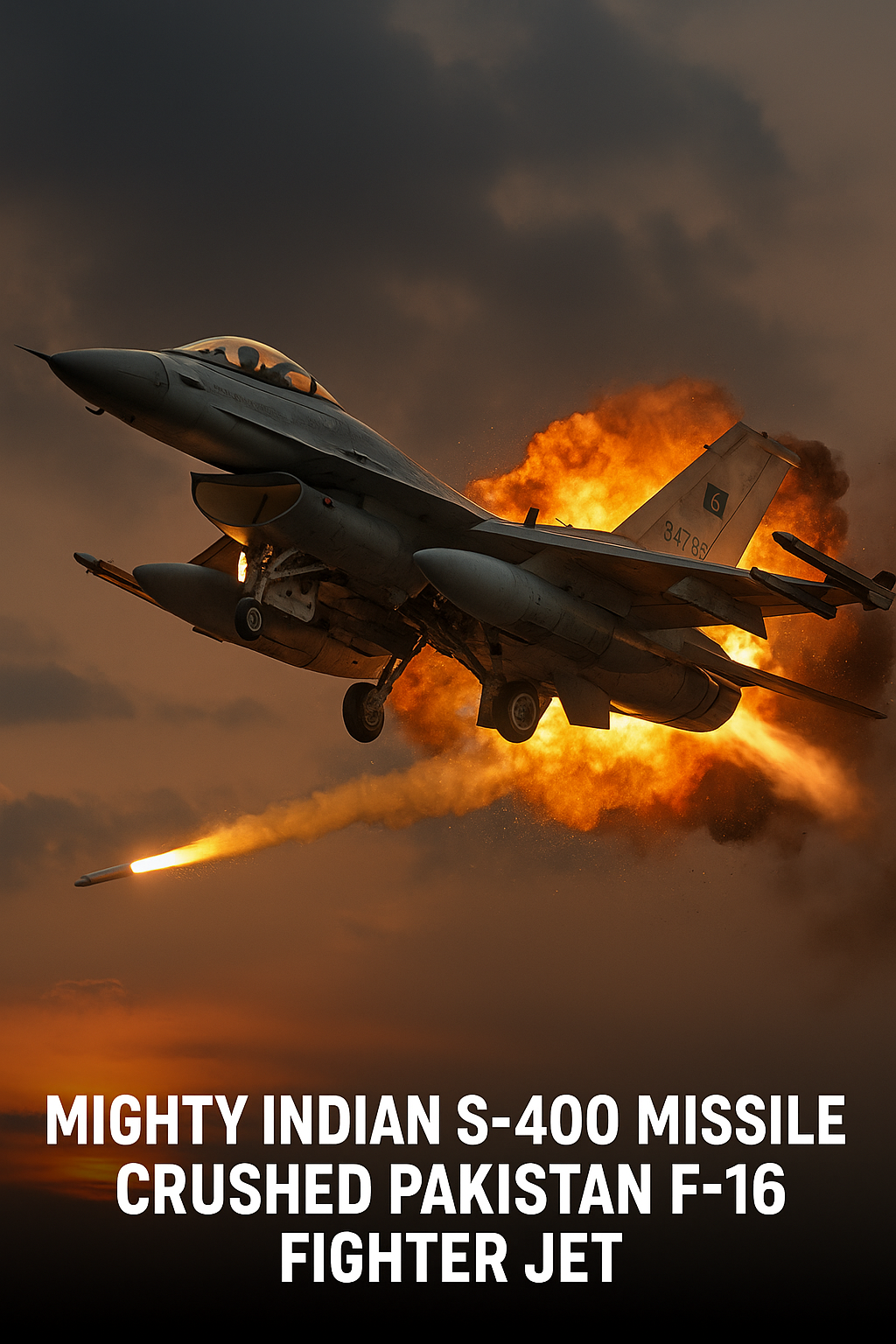An Indian surface-to-air missile shot down a Pakistan Air Force F-16 supersonic fighter jet, marking a significant development along the India-Pakistan frontier.
S-400 Missile System Strikes a Major Target
The incident happened in the evening hours and has sparked strong attention from both sides. The Indian missile that took down the fighter jet is part of the S-400 air defense system—one of the most advanced missile systems in the world.
Sargodha Air Base, a significant air force installation in Pakistan’s Punjab state, is where the Pakistani F-16 had taken off. Indian defense systems locked upon the plane as it took off and began a counterattack. Near the same Sargodha base, the missile struck its objective. This airbase is known for being heavily guarded and has played key roles in past conflicts.
The F-16 jet is a powerful fighter made in the United States and has been part of Pakistan’s air force since the late 1980s. Over the years, it has been upgraded many times and is considered a core part of Pakistan’s air power, along with Chinese and French-made aircraft.
This strike is being seen as one of the most serious air-to-air or ground-to-air engagements between India and Pakistan since the war in 1971. The last such aerial clash was in 2019, when tensions rose after the Pulwama terror attack and India carried out air strikes in Balakot.
PL-15 Missile Combat Confirmed China Unleashes Powerful Weapon in Real Battle
Pakistan’s Attempt to Target India Foiled
Before the F-16 was taken down, Pakistan had made an attempt to strike parts of India using drones and missiles. These attacks were aimed at areas like Jammu and other border locations. Pakistan tried to launch these strikes using unmanned aerial vehicles and long-range artillery.
Important locations in Jammu, including RS Pura, Arnia, Samba, and Hiranagar, were heavily shelled by artillery. The shelling created panic and caused the authorities to take quick action to prevent loss of life and property. Pathankot in Punjab, a sensitive and important location for India near the border, also came under artillery attack.
To counter these attacks, India activated its S-400 missile defence system, which is designed to detect and destroy incoming threats. The S-400 helped intercept some of the missiles and drones before they could reach their targets. Sirens were sounded in various cities like Chandigarh and nearby Mohali. People were asked to stay indoors, and a blackout was ordered to avoid being spotted from the air.
Shops were closed, and emergency services were put on high alert. The situation remained tense as Indian defense forces, including the S-400 system, responded with force and prevented major damage.
Operation Sindoor: Trump Says Hope It Ends Fast As India Launches Devastating Attack on JeM Sites
India used its advanced S-400 missile defense system to intercept many of the missiles and drones sent by Pakistan. This air defense system is designed to hit targets that are flying at very high speeds and from long distances. The debris from intercepted drones and missiles has been found in several locations across India, proving that the attacks did happen and were neutralized effectively.
Indian Defence Responds with Force
Pakistan had attacked several military installations in locations like Jammu, Pathankot, and Udhampur, according to confirmation from India’s military forces, including the Integrated Defense Staff (IDS). These areas are close to the international boundary in Jammu and Kashmir and are important for India’s military operations.
According to the IDS, there were no losses due to the Pakistani attacks. Both kinetic (such as drones and missiles) and non-kinetic (such as electronic warfare devices) methods were promptly employed by Indian forces in their response. The response was swift and aimed at protecting critical military infrastructure.
Nuclear Flashpoint: India Strikes, Pakistan Retaliates, Region Trembles
On the night of the attack, Pakistan had tried to strike military targets in several Indian cities including Awantipura, Srinagar, Jammu, Amritsar, Kapurthala, Jalandhar, Ludhiana, Adampur, Bhatinda, Chandigarh, Nal, Phalodi, Uttarlai, and Bhuj. These attempts were mostly carried out using drones and missiles.
India deployed its Unmanned Aircraft System Grid (UAS Grid) and other air defense technologies to track and shoot down the incoming threats. The S-400 played a major role in this defense action. The Indian forces also fired S-400 missiles at moving targets to neutralize them quickly. In a further counter step, India launched HARPY drones, which are specially made to destroy enemy radar systems. Pakistan’s air defense radars were successfully targeted and rendered inoperable by these drones.
Additionally, India also hit an air defense site located in Lahore. This action was part of a broader response aimed at stopping any further attempts of aggression from the other side. Debris from these actions is now being collected and analyzed to understand the full scope of the attack and the defense operation.
This engagement marks a significant point in India’s defense posture, showcasing its ability to respond quickly to aerial threats. The use of the S-400 system, combined with drones and coordinated radar tracking, highlights India’s readiness to protect its skies from hostile attacks.

